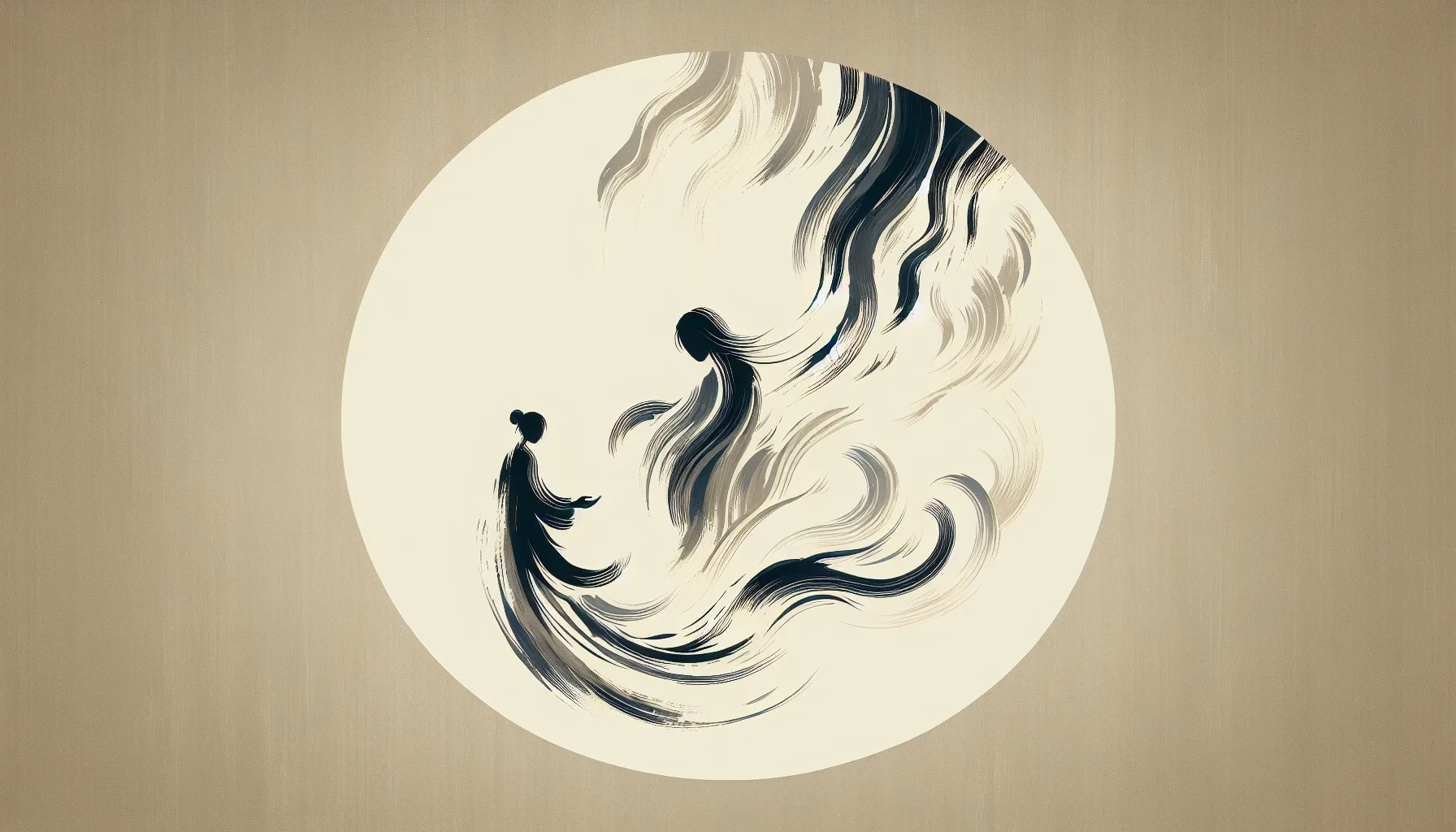Understanding Emotional Pain
Breaking up is hard on the heart, right? We’ve all felt that gut-wrenching ache after a relationship hits the skids. And how do we deal with the mess left behind? Sometimes we get stuck rerunning old movies in our heads, tripping ourselves up over and over. Time to hit pause!
Impact of Past Experiences
We can’t help but carry our past in our back pockets. The crappy stuff we’ve been through leaves its mark – and not always the cool kind like a vintage concert tee. It’s more like an itchy tag on a shirt you can’t remove. It’s like picking a fight with your shadow. These scars from the past often hijack our brains, making life choices feel like a wacky game of emotional Jenga. Anxiety or feeling blue might come knocking, sometimes for breakfast, dinner, and lunch. It’s like a gloomy friend you didn’t invite to the party.
Instead of sweeping our feelings under the rug, let’s face them head-on. Yeah, it’s like staring down that weird clown at a haunted house, but when we do, the scares lose their punch. Try grounding techniques to pull yourself back to the here and now. Think visualization—a mini-vacation for the brain. It’s a great hack against anxiety and those pesky memory-overload moments when the past creeps back in.
Symptoms of emotional baggage can pop up like:
| Effect | How it Feels |
|---|---|
| Anxiety | That pesky worrywart whispering old fears |
| Low Self-Esteem | Feeling less than awesome, thanks to relationship ghosts |
| Impulsivity | Running with scissors in your emotional life |
| Depression | A gray cloud that moves in, whether you like it or not |
Self-Sabotaging Behavior
Ah, self-sabotage—the party crasher of personal growth. We’re talking about those sneaky ways we mess things up for ourselves before we even know what’s happening. It’s like when life gives you lemons, and you blithely sit back and watch them rot. Binge-drinking Netflix or stuffing face with junk instead of facing emotions? We’ve been there.
It’s like we put on our own invisible handcuffs, keeping us from what we really want—freedom and a fresh start. From dodging responsibilities or picking fights in relationships out of habit, these behaviors weigh us down. It’s time to stop covering up and start clearing up.
Here’s the newsflash: healing means rolling up our sleeves and doing the work. It’s about getting comfy with being uncomfortable. Dive deep and confront those old ghosts, whether it’s on a therapist’s couch or in your own reflections. By wrestling with our past, we pave the way to something better—finally breaking the cycle.
And if you’re after more help, check out our guides on bouncing back from breakups and letting go of the past as we keep moving forward together.
Healing Strategies for Past Pain
Getting through emotional pain can feel harder than climbing a giant mountain, but with some clever strategies, we can learn to handle it better. Here’s a handful of handy methods you may find helpful.
Patience and Dedication
Let’s be real – healing isn’t like flipping a switch. It’s a slow burn, a slow dance, even. It needs us to hang in there, keep our eyes on the prize, and believe things will get better. Sometimes, the sting from past events keeps us stuck in a loop, leaving us to accidentally trip over the same ol’ hurts (PsychCentral). Being kind and patient with ourselves can go a long way. Think of it as giving yourself a break, an understanding nod that it’s okay to take your time rebuilding your emotional powerhouse.
Somatic Therapy Techniques
Somatic therapy is like baking a cake except the ingredient list includes body awareness and self-regulation. This technique, dreamed up by Peter Levine in the ’70s, offers a unique way to help those of us dealing with old stress or trauma (PsychCentral).
Instead of only talking it out, it gets our physical sensations talking too. It’s like being in a conversation with our own bodies, helping us release any bottled-up stress patterns. All in all, it’s a nifty way for us to get a handle on everyday stress, while getting to know what our emotions are saying under the hood.
Grounding Exercises
When the past tries to sneak up on us, grounding exercises can be a lifesaver, a sort of mental anchor. Picture resourcing and visualization techniques like an emergency toolkit for when our brains want to flashback or freak out (PsychCentral).
By doing these exercises, we tether ourselves to the present moment, toning down the chaos inside our minds. Not only do these exercises help bring us back to the now, but they also arm us with resilience for those pesky, peace-interrupting memories.
Using these healing tips can steer us through the rocky terrain of emotions, especially when it comes to messy relationship stuff. By valuing patience, diving into somatic healing, and practicing grounding routines, we make real strides in leaving our past hurt behind. Look up our articles on how to release past relationship baggage and moving on after a breakup for more nifty nuggets of wisdom.
Emotional Brain in Communication
Influence of Emotional Brain
Experiencing a breakup can feel like riding an emotional rollercoaster, one where our feelings take the wheel. Our heart is the driving force behind a whopping 90 to 95% of our decisions and actions—bet you didn’t expect your brain to be that hands-off, did ya? Sure, we like to think we’re logical creatures, but truth is, emotions are the ones calling the shots (Stanford GSB). It’s a reminder that while having a head-to-head isn’t bad during conversations, ignoring emotions is a big no-no.
When we’re on the mend, our feelings play a huge role in how we share our pain. They’re kind of like that friend who eats all your chips but never refills the bowl—they can be a lot, but they’re also essential in shaping the way we truly relate to others. Tapping into our emotions helps us speak our truth and bond with people who get where we’re coming from. Bonds formed this way can turn chats into sincere heart-to-hearts that help us feel a litter less alone in our journey.
| Part of the Process | What’s Your Emotional Brain Up To? |
|---|---|
| Making Choices | Rules the roost 90–95% of the time |
| The Logical Stuff | Only about 5-10% of the pie |
| Talking it Out | Kicks off with feelings first |
Effective Communication Strategies
When life’s got us dealing with heartaches, we can use some nifty tricks to keep talking without going all logic-overload. Here’s how to charm our emotional side while sprinkling in some common sense:
-
Empathy: Try to get where they’re coming from—everyone loves someone who’s all ears and heart. It’s the secret sauce that turns a plain convo into a chat that matters.
-
Storytelling: Swap tales of the heartache saga that has you eating ice cream at 2 a.m. It builds a ‘been there, felt that’ vibe that pulls everyone into the story.
-
Non-verbal Cues: Watch the way people talk without saying things. Gestures and looks have their own language, and they’re shouting out feelings louder than words.
-
Humor and Positivity: Crack a joke when it’s not too awkward. A good laugh can pop the tension bubble and brighten the mood—think of it as emotional sunshine.
-
Active Listening: Just listen—really, really listen. Let them know you hear them, loud and clear. Show you care by echoing their sentiments, making them know their words hit home.
Using these talking tactics can make the ‘let-it-be’ chats more healing. Emotions are like high tide; let them guide the conversation after a breakup. For more pearls of wisdom on tossing those past relationship hang-ups, check out our piece on how to release past relationship baggage. And if you’re piecing things back together, don’t miss rebuilding life after a breakup.
Coping with Emotional Pain
When a breakup leaves us feeling raw and exposed, figuring out how to ride those emotional waves might seem perplexing. It’s about catching the drift of our feelings, leaning on the pros when needed, and giving a nod to lifestyle tweaks that can help the heart recover over time.
Managing Emotions
Handling the aftermath of heartache ain’t easy, but we got some tricks up our sleeves. Grounding exercises, like holding onto happy images or steadying our breath, keep our feet firmly planted in now, not yesterday’s drama. Goodbye, endless replay of old scenes—let’s make room for a bit of calm and clarity. They’re gold for times when the past pops up out of nowhere, messing with our peace of mind (check out Psych Central for tips).
Mindfulness? Yep, that’s a fancy way of saying we’re tuning in. Giving our feelings a name—and owning them through breathing exercises or even just gazing at the sunset—swaps knee-jerk reactions for a more chill vibe (Psych Central). We can even jot down our feels in a daily mood journal, turning a heap of emotions into a roadmap of sorts.
| Emotion | Intensity (1-10) | Triggers | Coping Strategies |
|---|---|---|---|
| Sadness | 8 | Song that reminds us of them | Breathing, Visualization |
| Anger | 6 | Finding an old photo | Run, Scream (into a pillow) |
| Anxiety | 7 | Unplanned encounter | Control Breath, Guided chat with a mate |
Seeking Professional Help
When our blues hang around like unwelcome guests, a seasoned pro might be the right person to boot ’em out. Sure, heart aches can drag from days to months, and if they set up camp for longer, it’s time to reckon with signs of deeper emotional aches, maybe PTSD territories. A savvy therapist gives us the tools to snatch back our happiness (HelpGuide.org).
Hook up with a therapist who really gets where you’re coming from—finding someone who’s seen a breakup or two can be reassuring. Got a session? Prep like you’re about to spill the tea with a friend. It’s key when your usual tricks don’t cut it anymore (Eddins Counseling Group).
Lifestyle Medicine Approach
Shifting our lifestyle for the better is another game-changer. It’s not just about eating kale but stacking up on good vibes through regular sweat sessions and upbeat habits. Let’s shake off some stress! Getting our heart rate up lifts our spirits and lets off steam. Good sleep, decent grub, and keeping up with friends rounds out our emotional safety net (Psych Central).
With a bit of routine—picture workout days, shared coffees, and balanced meals—we’re making strides toward piecing back our curiosities of life.
| Healthy Habit | Frequency | Benefits |
|---|---|---|
| Running or walking | 3-5 times a week | Grumpy mood fix, anxiety buster |
| Mindfulness | Daily | Mellow mood maker, stress leveler |
| Call a friend | Weekly | Builds support, injects fun |
| Eating well | Every day | Brain and body fuel |
It’s a messy ride, but these practices beckon hope as we patch our hearts back together. Embracing how we change, we snag back our true selves, bit by bit, gaining a sense of fresh vigor.
Process of Emotional Healing
Emotional healing is like picking ourselves up after life’s tougher moments, such as a breakup or divorce. It’s about figuring out what we’re feeling and getting back on our feet.
Acknowledgment and Acceptance
First off, we need to own up to our emotions. It’s all about recognizing what’s going on inside us. We’ve got to face those feelings head-on—grief, anger, the whole gang. According to Verywell Mind, this involves being kind to ourselves, staying aware, and practicing self-care.
| Steps in Acknowledgment and Acceptance | Description |
|---|---|
| Acknowledge Feelings | Pinpoint and face the emotions we’re dealing with. |
| Allow Emotions | Give ourselves permission to feel without judgment. |
| Acceptance | Realize these emotions are part of our healing. |
Accepting our feelings doesn’t mean we’re okay with what happened. It just means we recognize them, which is a crucial part of healing.
Therapeutic Techniques
Once we know what we’re feeling, it’s time to try out some healing strategies. Simple, but effective methods, like somatic experiencing (SE) and trauma release exercises (TRE), can work wonders. SE helps us become aware of our body’s sensations, linking how we feel emotionally and physically. TRE, on the flip side, uses movement to shake off those stress cobwebs (Verywell Mind).
| Therapeutic Techniques | Description |
|---|---|
| Somatic Experiencing | Tunes into physical sensations to handle emotions. |
| Trauma Release Exercises | Uses movement to clear stored-up stress and trauma. |
Making these practices part of our everyday life can help us manage emotional pain much better.
Benefits of Emotional Healing
Healing isn’t just about feeling better—it’s about bouncing back stronger. We can catch a glimpse of our past without the storm of bad vibes crashing over us. A healed heart helps us handle what life throws our way, with a newfound calmness (Verywell Mind).
| Benefits of Emotional Healing | Description |
|---|---|
| Emotional Resilience | Boosts our ability to tackle future challenges. |
| Increased Peace | Brings a soothing sense of calm and acceptance. |
| Improved Perspective | Let’s us look back with a clearer view. |
Healing is a slow and steady journey. By stepping through the stages—accepting our pain, trying out healing techniques, and appreciating the upsides—we’re making big moves towards letting go of the past and shaping up our futures. For more help, check out moving on from an ex or rebuilding life after a breakup.
Moving Forward from Past Experiences
Getting over a breakup is like untying a knot; it takes time and patience. Yet, stepping ahead means we gotta shake things up and chew over smart ways to heal and bounce back. Let’s chat about some handy tricks to help us move on, like finding a listening ear, facing what’s behind us, and reigning in our feelings.
Seeking Support
Talk it out! Chatting with a counselor can be like having a GPS when you’re lost in breakup-land. Having someone in your corner to share all those messy feelings with can really clear the fog and help organize those thoughts swirling around in your head. And hey, if you’re not into the chatty route, grab a journal and let those thoughts spill out. It’s a great way to have a heart-to-heart with yourself. Writing it down can shape the chaos into something that makes a bit more sense. Also, dishing out forgiveness—especially if someone made a mess of things—can be a ticket to freeing ourselves from old pain and cruising forward.
Confronting the Past
Facing the past is kind of like cleaning out a closet; sometimes, we gotta pull everything out to find what we really want to keep. It’s about taking a good, hard look at those old stories we tell ourselves, whether through therapy, jotting stuff down, or just mellowing out with some meditation vibes. These activities aren’t about diving back into the bad stuff but more about making peace with it so it sits snug in our life story book. If the past’s left a few scars, stepping up to it is crucial—it’s not about replaying the pain but fitting it all in a way that lets us bloom and get wiser.
Taking Control of Emotions
Owning our feelings after a breakup is like holding the steering wheel; it’s all about choosing our direction. We can’t rewind time, but we can decide where we’re headed. Pinpointing what hits our emotional buttons is a move towards gaining our grip back, letting us start fresh and shape new habits. So, let’s pick new paths—maybe a hobby that sparks us up or friends that lift us higher. By taking these small strides toward feeling better, we can get busy building our life from right here, finding the giggles and good times lying ahead.
These tips—leaning on support, clearing up the past, and steering our emotions—can help us ride the waves of moving on to brighter days and fresh starts. If you’re on the lookout for more nuggets of wisdom, pop over to our reads on how to heal after a breakup and reclaiming self-worth post-breakup.




